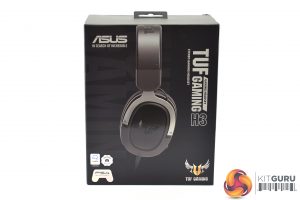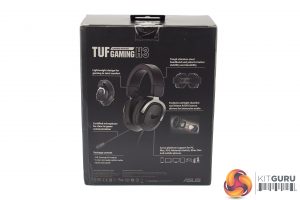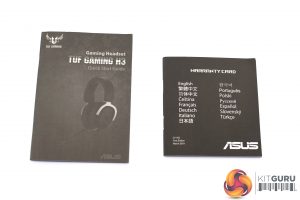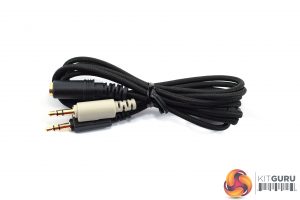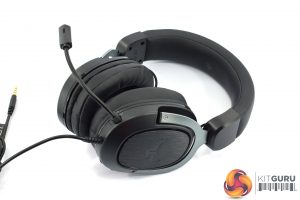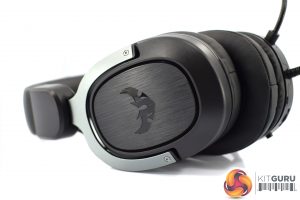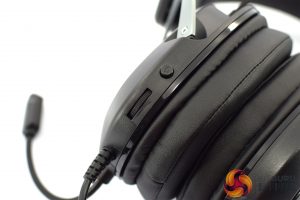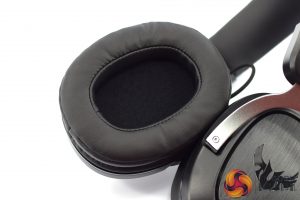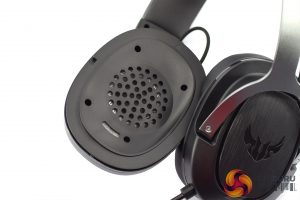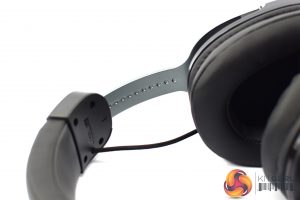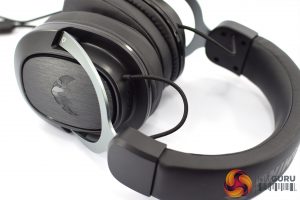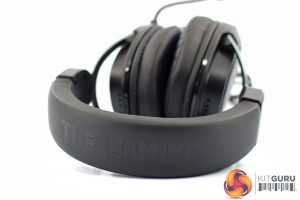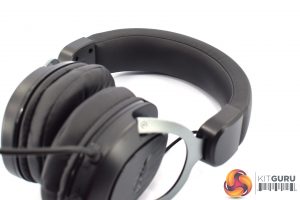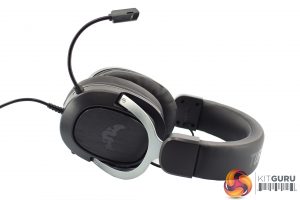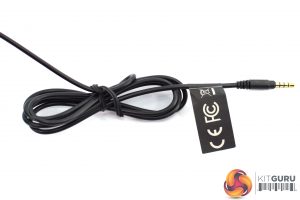The ASUS TUF Gaming H3 ships in a tidy black box, with a large image of the headset visible on the front.
On the back, we find a smaller image of the headset with more detail on its various key features.
Inside, we find both a quick start guide and warranty card, as well as a 1.3m audio/mic splitter cable.
Moving onto the headset itself, above you can see an ‘overview' look at the H3, but below we will dive into all the different aspects of the design.
Starting with the back of the earcups, these are made from plastic but ASUS has incorporated a brushed metal effect in the middle of the cups, with the winged TUF logo also visible here. It's pretty obvious by now that this is a closed-back headset.
The left-hand cup sports some on-ear controls, with a simple volume wheel and a mic-mute button. There's no in-line controller, so this is all the control you get over the H3.
Moving to the inside of the cups, here we get a look at the ear cushions. These are covered with protein leather, and ASUS says the foam inside is ‘fast-cooling memory foam'. I do greatly appreciate that these cushions are removable, so you can swap them out for aftermarket ear pads if you have any that fit.
Connecting each earcup to the main headband are two stainless steel yokes. These also act as a headband slider, to adjust the size of the headset, and there are size markings on the inside of the slider.
It's also worth pointing out that there is some exposed cabling at the top of the ear cups which runs through the headband and connects one earcup to the other. This is done in a similar style to the classic HyperX Cloud II.
Speaking of the headband, this is covered with more protein leather and on the top side of the band we can see the TUF Gaming branding. The inside of the band is plain, covered with more of that protein leather.
As for the microphone, this is non-removable but sports a ‘goose neck' design, so it can be twisted around and moved into pretty much any position that you want. The mic itself is unidirectional with a 50-10000Hz frequency range.
Lastly, the cable attached to the headset is also non-removable and measures 1.3m, terminating in a 4-pole 3.5mm jack connector. Do bear in mind, though, that the 1.3m splitter cable is also included which gives extra length, as well as dedicated audio/mic inputs.
 KitGuru KitGuru.net – Tech News | Hardware News | Hardware Reviews | IOS | Mobile | Gaming | Graphics Cards
KitGuru KitGuru.net – Tech News | Hardware News | Hardware Reviews | IOS | Mobile | Gaming | Graphics Cards


